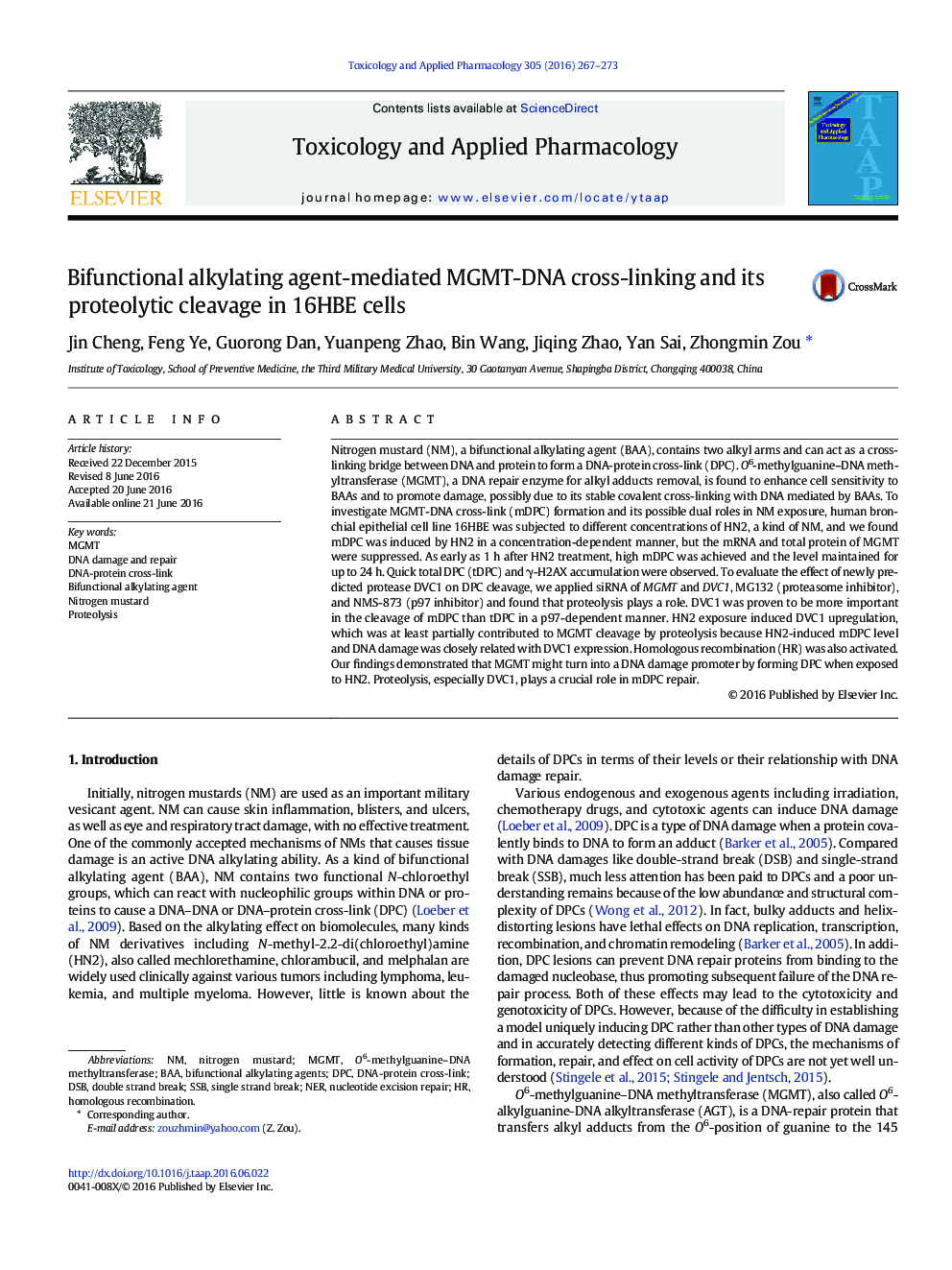| کد مقاله | کد نشریه | سال انتشار | مقاله انگلیسی | نسخه تمام متن |
|---|---|---|---|---|
| 5845861 | 1561157 | 2016 | 7 صفحه PDF | دانلود رایگان |

- Nitrogen mustard-induced MGMT-DNA cross-linking was detected in a living cell.
- Concentration- and time-dependent manners of MGMT-DNA cross-linking were revealed.
- Proteolysis played an important role in protein (MGMT)-DNA cross-linking repair.
- DVC1 acts as a proteolytic enzyme in cross-linking repair in a p97-dependent manner.
Nitrogen mustard (NM), a bifunctional alkylating agent (BAA), contains two alkyl arms and can act as a cross-linking bridge between DNA and protein to form a DNA-protein cross-link (DPC). O6-methylguanine-DNA methyltransferase (MGMT), a DNA repair enzyme for alkyl adducts removal, is found to enhance cell sensitivity to BAAs and to promote damage, possibly due to its stable covalent cross-linking with DNA mediated by BAAs. To investigate MGMT-DNA cross-link (mDPC) formation and its possible dual roles in NM exposure, human bronchial epithelial cell line 16HBE was subjected to different concentrations of HN2, a kind of NM, and we found mDPC was induced by HN2 in a concentration-dependent manner, but the mRNA and total protein of MGMT were suppressed. As early as 1 h after HN2 treatment, high mDPC was achieved and the level maintained for up to 24 h. Quick total DPC (tDPC) and γ-H2AX accumulation were observed. To evaluate the effect of newly predicted protease DVC1 on DPC cleavage, we applied siRNA of MGMT and DVC1, MG132 (proteasome inhibitor), and NMS-873 (p97 inhibitor) and found that proteolysis plays a role. DVC1 was proven to be more important in the cleavage of mDPC than tDPC in a p97-dependent manner. HN2 exposure induced DVC1 upregulation, which was at least partially contributed to MGMT cleavage by proteolysis because HN2-induced mDPC level and DNA damage was closely related with DVC1 expression. Homologous recombination (HR) was also activated. Our findings demonstrated that MGMT might turn into a DNA damage promoter by forming DPC when exposed to HN2. Proteolysis, especially DVC1, plays a crucial role in mDPC repair.
Journal: Toxicology and Applied Pharmacology - Volume 305, 15 August 2016, Pages 267-273